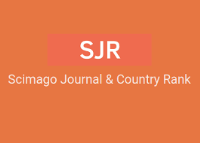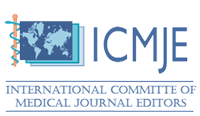Using Hydrus-1D software to predict cumulative infiltration values for different soil textures
Аннотация
Four soil samples with varying textures (clay loam, clay, sandy clay loam, and silty loam) were collected from different locations in Nineveh Governorate, northern Iraq. Four different models were used to calculate air-entry values, including Lenhard (Ψe), Cornelis (Ψe1), Van Genuchten (Ψe2), and a modified model proposed in this study (Ψe.m) and a modified model proposed in this study (α). These values, which represent the inverse of the air-entry value (α), serve as inputs for the Hydrus-1D program. It is a difficult standard to measure and requires time and work to estimate. These models were used in the Brooks and Corey model (1964) to predict accumulated infiltration. It is expressed in the following formulas (IΨe, IΨe1, IΨe2, IΨem). As a new method in predicting accumulated infiltration values by using the Hydrus-1D program and comparing it with infiltration values measured in the laboratory and field. This a novel scientific enhances the program's functionality and updates input data to minimize errors.
The results demonstrated that cumulative infiltration predicted by Hydrus-1D using hydraulic functions (,,) and the two constants in V.G model (α, n,) gave close values to the measured values. A high level of agreement was also observed between the predicted accumulated infiltration values (IΨe, IΨe1, IΨe2, IΨem) and the measured values when the same program was used, relying on the air-entry values of (Ψe, Ψe1, Ψe2, Ψe.m) as an alternative to the (α) value. The modified value in this study (Ψe.m) gave the best results to predict accumulated infiltration values when used in the Hydrus-1D program. We recommend adopting this modified value (Ψe.m) in Hydrus-1D to predict soil hydraulic properties.
EDN: KTSAMQ
Скачивания
Литература
Simunek, J., Neumann, L.E., & Cook, F.J. (2011). Implementation of quadratic upstream interpolation schemes for solute transport into HYDRUS-1D. Environmental Modeling and Software, 26(11), 1298-1308. https://doi.org/10.1016/j.envsoft.2011.05.010
Rezaei, M., Seuntjens, P., Shahidi, R., Joris, I., Boenne, W., Al-Barri, B., & Cornelis, W.M. (2016). The relevance of in situ and laboratory characterization of sandy soil hydraulic properties for soil water simulations. Journal of Hydrology, 534, 251-265. https://doi.org/10.1016/j.jhydrol.2015.12.062
Kasel, D., Bradford, S.A., Simunek, J., Heggen, M., Vereecken, H., & Klumpp, E. (2013). Transport and retention of multi-walled carbon nanotubes in saturated porous media: Effects of input concentration and grain size. Water Research, 47(2), 933-944. https://doi.org/10.1016/j.watres.2012.11.019
Dabach, S., Lazarovitch, N., Simunek, J., & Shani, U. (2013). Numerical investigation of irrigation scheduling based on soil water status. Irrigation Science, 31(1), 27-36. https://link.springer.com/article/10.1007/s00271-011-0289-x EDN: https://elibrary.ru/qgiygv
Esam, M., AL-Qassab, S.A., & AL-Wazzan, F.A. (2022). Using inverse modeling by HYDRUS-1D to predict some soil hydraulic parameters from soil water evaporation. Colombia Forestal, 25, 21-35. https://doi.org/10.14483/2256201X.18157
Mustafa, B.M., & Al-Wazzan, F.A. (2022). The variation of some soil physical properties by using water with different salinities. Int. J. Agricult. Stat. Sci., 18(1), 2099-2110. https://connectjournals.com/pages/articledetails/toc036676
Al-Wazzan, F.A., & Sarbast, A.M. (2022). Effects of conservation and conventional tillage on some soil hydraulic properties. IOP Conf. Series: Earth and Environmental Science, 1060, 012002. https://doi.org/10.1088/1755-1315/1060/1/012002 EDN: https://elibrary.ru/yyyyzs
Philip, J.R. (1957a). The theory of infiltration. 1: The infiltration equation and its solution. Soil Sci., 83, 345-357. https://journals.lww.com/soilsci/Citation/1957/05000/THE_THEORY_OF_INFILTRATION_1_THE_INFILTRATION.2.aspx
Klute, A. (1986). Methods of soil analysis part 1: Physical and mineralogical methods (2nd ed.). Agronomy Monograph No.9. Madison, WI: ASA-SSSA. https://doi.org/10.2136/sssabookser5.1.2ed
Parr, J.F., & Bertrand, A.R. (1960). Water infiltration into soils. Adv. In Agron, 12, 311-363. https://doi.org/10.1016/S0065-2113(08)60086-3
Lenhard, R., Parker, J.C., & Mishra, S. (1989). On the correspondence between Brooks-Corey and van Genuchten model. J. Irrig. Drain. E., 115, 744-751. https://doi.org/10.1061/(ASCE)0733-9437(1989)115:4(744)
Cornelis, V.M., Khlosi, M., Hartmann, R., van Meirvenne, M., & Devos, B. (2005). Comparison on unimodal analytical expression for soil water retention curve. Soil Sci. Soc. Am. J., 69, 1902-1911. https://journals.lww.com/soilsci/abstract/2012/06000/entropy_characterization_of_soil_pore_systems.1.aspx
van Genuchten, M.Th. (1980). A closed-form equation for predicting the hydraulic conductivity of unsaturated soil. Soil Sci. Soc. Am. J., 44, 892-898. https://doi.org/10.2136/sssaj1980.036159950
Philip, J.R. (1957b). The theory of infiltration. 2: The profile of infinity. Soil Sci., 83, 345-448. https://journals.lww.com/soilsci/Citation/1957/06000/The_Theory_of_Infiltration__2__the_Profile_of.3.aspx
Hillel, D. (1980). Applications of soil physics. Academic press, New York.
Ritter, A., Hupet, F., Munoz-Carpena, R., Lambot, S., & Vanclooster, M. (2003). Using inverse method for estimating soil hydraulic properties from field data as an alternative to direct methods. Agricultural Water Management, 59, 77-96. https://doi.org/10.1016/S0378-3774(02)00160-9 EDN: https://elibrary.ru/bfwujr
Hachimi, M., Maslouhi, A., Tamoh, K., & Qanza, H. (2019). Estimation of soil hydraulic properties of basin Loukkos (Morocco) by inverse modeling. KSCE Journal of Civil Engineering, 23(3), 1407-1419. https://doi.org/10.1007/s12205-019-0628-7
Dexter, A.R., & Richard, G.R. (2009). Tillage of soil in relation to their bimodal pore size distributions. Soil Tillage Res., 103, 113-118. https://doi.org/10.1016/j.still.2008.10.001
Schaap, M.G., Leij, F.J., & van Genuchten, M.Th. (2001). Rosetta: a computer program for estimating soil hydraulic parameters with hierarch pedotransfer functions. Journal of Hydrology, 251(3-4), 163-176. https://doi.org/10.1016/S0022-1694(01)00466-8 EDN: https://elibrary.ru/arbjnj
Simunek, J., Angulo-Jaramillo, R., Schaap, M.G., Martinus, J.V., & Van Genuchten, Th. (1998). Using an inverse method to estimate the hydraulic properties of crusted soil from tension-disc infiltrometer data. Geoderma, 86, 61-81. https://doi.org/10.1016/S0016-7061(98)00035-4 EDN: https://elibrary.ru/absmkd
Vogel, T., van Genuchten, M.Th., & Cislerova, M. (2001). Effect of the shape of the soil hydraulic functions near saturation on variably-saturated flow predictions. Advances in Water Resources, 24, 133-144. https://doi.org/10.1016/S0309-1708(00)00037-3
Mualem, Y. (1976). A new model predicting the hydraulic of unsaturated porous media. Water Resour. Res., 12(3), 513-522. https://doi.org/10.1029/WR012i003p00513
Brooks, R.H., & Corey, A.T. (1964). Hydraulic properties of porous media. Hydrology paper No.3. Civil Engineering Department, Colorado State University, Fort Collins. https://api.mountainscholar.org/server/api/core/bitstreams/f7532f39-5f13-4e4b-a3c0-dd9523ba5219/content
Просмотров аннотации: 152
Copyright (c) 2025 Faris Akram AL-Wazzan

Это произведение доступно по лицензии Creative Commons «Attribution-NonCommercial-NoDerivatives» («Атрибуция — Некоммерческое использование — Без производных произведений») 4.0 Всемирная.

























































